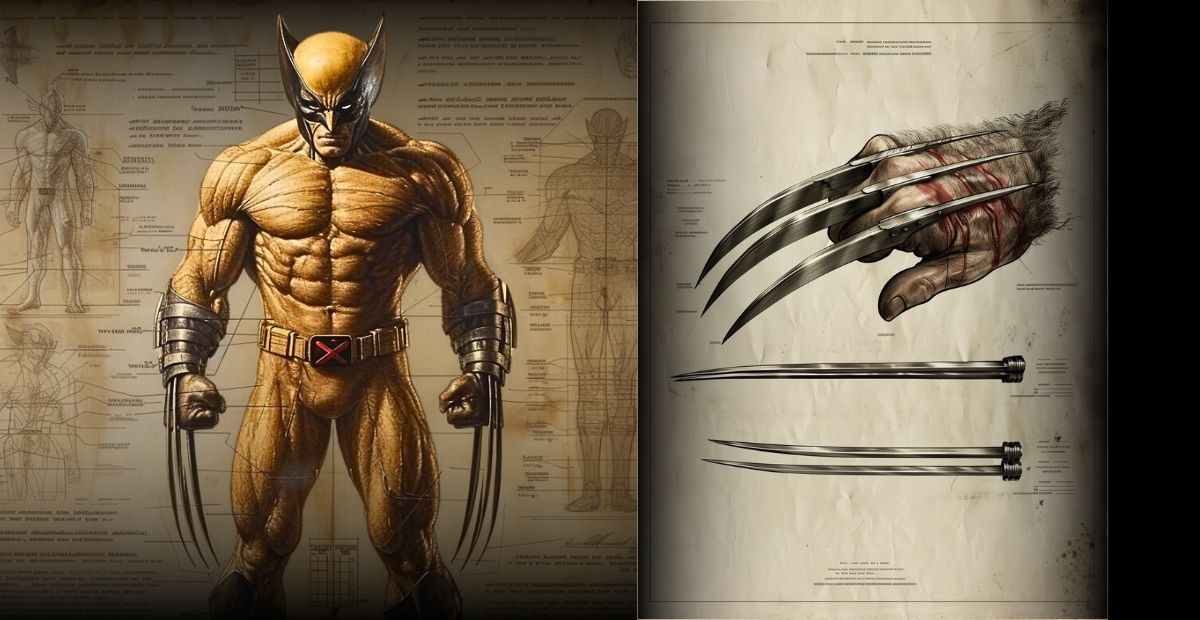Metal Skeleton or Adamantium Claws – they’re all mainstream when discussing the iconic Wolverine’s claws.
But there are some interesting facts about how the claws work.
While the claw-extending ability is obviously genetic, is there a scientific or biological explanation behind it? Or is there an advanced technological mechanism involved?
Let’s find out!
Contents
Anatomy Explained: Wolverine’s Natural Claws
Wolverine’s unique genetic mutation blessed him with bone claws, a natural part of his anatomy.
These claws operate on command, extending and retracting as he reacts to his body’s electrical signals—just like flexing your fingers.
What makes this possible? Smaller muscles in his forearms that allow for precise control because they have fewer muscle fibers and a lower innervation ratio.
This means each movement can be finely tuned. Each claw connects independently to forearm bones, enabling Wolverine to control them with incredible accuracy.
The process resembles tightening one’s fist, which activates the forearm muscles to extend the claws. Relaxing these muscles pulls the claws back into a resting position within the forearm.
How His Structural Bones Manage To Control The Claws
Wolverine’s forearms house specialized, small muscles, each connected to one of his three claws. This arrangement is needed for precise and independent claw movement.
And essentially, to prevent damage during extension, Wolverine must keep his wrists straight while extending his claws.
By keeping his wrists straight and ensuring that his knuckle’s structure and claws align, along with specific muscle contractions, Wolverine can ensure smooth claw movement.
His forearm bones, particularly the ulna and radius, are shaped to provide enough space for the claws to move freely.
Additionally, Wolverine’s unique ligament structure connects these muscles to the bones, facilitating dynamic movements.
His body’s ability to accommodate the movement of bones and ligaments when extending the claws is a critical factor in avoiding injuries like tearing through his wrists.
How Weapon X Program Can Intervene This Complex Structure?
The Weapon X program didn’t just implant metal claws in Wolverine; they also installed a device engineered to respond to Logan’s nervous system.
This device detects the electrical impulses from his brain, allowing Wolverine to extend and retract his claws at will, much like controlling one’s own hand movements.
With such invasive device attachments, barely, no one could survive the procedure.
Hence, choosing Wolverine is the ideal test subject for this experiment, due to his unique healing factor.
His ability to rapidly heal minimized the risks of rejection and complications from such advanced technology, ensuring the success of integrating the metal claws and control device.
Adamantium Skeleton: Pros-and-Cons for The Claws
Since it is commonly known how tragic Adamantium poisoning Wolverine, nevertheless, Adamantium should be counted as a double-edged sword with its pros-and-cons.
Let’s take about the cons:
Size & Storage: The adamantium coating definitely makes the claws larger and harder to store within the forearm without interfering with the bones.
Ligament and Tendon Attachments: The adamantium could disrupt the natural attachment sites of tendons and ligaments to the bones.
Agile Obstacle: With his entire skeleton coated in adamantium, Wolverine faces severe limitations in mobility and functionality because the metal could interfere with the natural movement of his joints and muscles, essential for extending and retracting his claws.
How about the pros?
Biological Adaptation to Adamantium: Adamantium has unique properties to integrate directly with biological systems, allowing Wolverine’s body to adapt (at some part).
Tendon and Ligament Growth: Wolverine’s tendons and ligaments can grow and attach directly to the adamantium.
Mimicking Natural Bone Functions: As mentioned earlier, because Adamantium can integrate with biological systems; parts of the adamantium are shown to mimic the emphasis sites necessary for the natural attachment and function of tendons and ligaments.
So, what do you guys think? Is Adamantium worth it or not? Share your point!
